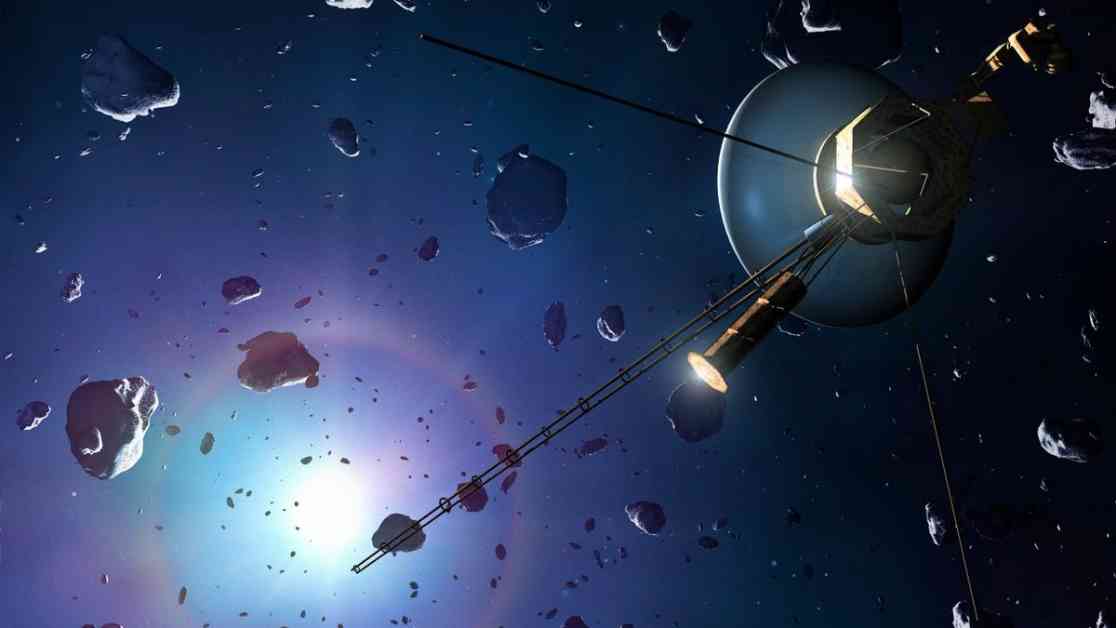At the far reaches of our solar system lies a mysterious region known as the Oort cloud, a collection of icy objects that may hold a surprising secret. Recent research suggests that this enigmatic shell of debris may be hiding a pair of spiral arms, giving it the appearance of a tiny galaxy. This discovery challenges our previous understanding of the Oort cloud’s structure and raises intriguing questions about its origins and influences from beyond our solar system.
The Oort cloud is believed to have originated from the remnants of the giant planets in our solar system, such as Jupiter, Neptune, Uranus, and Saturn, following their formation billions of years ago. These leftover materials, some of which are large enough to be classified as dwarf planets, were scattered far beyond the orbit of Pluto by the gravitational interactions of the planets as they orbited the sun. The inner edge of the Oort cloud is estimated to be located 2,000 to 5,000 astronomical units (AU) from the sun, while its outer edge extends between 10,000 and 100,000 AU away. To put this into perspective, one AU is roughly equivalent to the distance from Earth to the sun, or about 93 million miles.
Despite its vast size and distance from us, the Oort cloud exerts a significant influence on our understanding of the solar system and the cosmos at large. However, due to its immense distance and the faintness of its constituent objects, direct observation of the Oort cloud remains a formidable challenge. Instead, scientists rely on the study of long-period comets, which are thought to originate from this distant region and periodically visit the inner solar system due to gravitational perturbations.
One of the most intriguing aspects of the recent research is the suggestion that the Oort cloud may exhibit a spiral structure, similar to the disk-shaped arms of the Milky Way galaxy. By analyzing the orbits of comets and the gravitational forces at play both within and beyond our solar system, researchers have constructed a model that depicts the inner regions of the Oort cloud as a spiral disk extending over 15,000 AU. This model offers new insights into the potential configuration of this elusive region and opens up avenues for further exploration and observation.
The study also highlights the role of galactic tides, the gravitational forces exerted by stars, black holes, and the center of our galaxy, in shaping the Oort cloud’s structure. These subtle influences, which are often masked by the sun’s gravity for objects closer to our star, play a crucial role in determining the dynamics of the Oort cloud and its constituent objects. By factoring in these galactic tides, researchers were able to generate a model that closely resembles the observed spiral pattern in the inner regions of the Oort cloud.
While confirming this spiral structure through direct observations remains a formidable task, researchers are hopeful that future studies and advancements in technology will shed more light on the mysteries of the Oort cloud. By unraveling the secrets of this distant realm, scientists aim to gain a deeper understanding of the origins of comets, the evolution of our solar system, and the ongoing interactions between the Oort cloud and the broader cosmic environment.
In conclusion, the discovery of potential spiral arms in the Oort cloud offers a fascinating glimpse into the complexity and beauty of our solar system’s outermost regions. As we continue to explore and study this enigmatic realm, we are reminded of the boundless wonders that await us beyond the familiar confines of our planetary neighborhood. Through curiosity, perseverance, and a spirit of exploration, we may unlock the secrets of the Oort cloud and deepen our appreciation of the vast and interconnected universe in which we reside.










